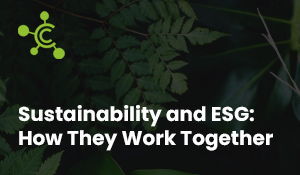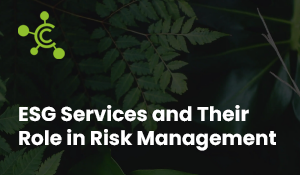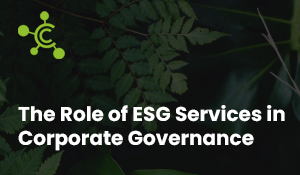Introduction
Sustainability and ESG (Environmental, Social, and Governance) are often mentioned together in the context of corporate responsibility, but what is the relationship between these two concepts? As businesses strive to become more responsible and resilient, understanding how sustainability and ESG work together is crucial. This post explores the interconnectedness of sustainability and ESG, providing insights on how businesses can integrate both into their operations.
The Relationship Between Sustainability and ESG
Sustainability and ESG are closely related, but they are not identical. Sustainability refers to the capacity to endure in a way that does not deplete resources or harm the environment, ensuring that future generations can meet their needs. ESG, on the other hand, is a framework used by companies to manage risks and opportunities related to environmental, social, and governance factors.
- Environmental: Focuses on a company’s impact on the planet, including its carbon footprint, resource use, waste management, and efforts to combat climate change.
- Social: Addresses how a company manages relationships with employees, suppliers, customers, and the communities where it operates. It includes issues like labour practices, human rights, and community engagement.
- Governance: Relates to how a company is managed and controlled, including leadership structure, executive compensation, audits, internal controls, and shareholder rights.
While sustainability is often considered a goal, ESG provides the framework and metrics to achieve it. In essence, ESG is a way to operationalize sustainability within a business context, providing measurable outcomes that stakeholders can evaluate.
Implementing Sustainability in ESG Practices
Integrating sustainability into ESG practices involves aligning a company’s environmental, social, and governance efforts with its sustainability goals. Here’s how businesses can do this effectively:
- Environmental Practices:
- Carbon Reduction: Implement carbon reporting to track and reduce greenhouse gas emissions, aligning with sustainability goals.
- Resource Efficiency: Optimize resource use by adopting energy-efficient technologies and reducing waste through circular economy principles.
- Biodiversity and Conservation: Support initiatives that protect ecosystems and biodiversity, such as sustainable sourcing and land conservation projects.
- Social Practices:
- Fair Labor Practices: Ensure that all employees are treated fairly, with safe working conditions, fair wages, and opportunities for growth.
- Community Engagement: Invest in local communities through social initiatives, education, and infrastructure development.
- Diversity and Inclusion: Promote diversity and inclusion within the workforce, ensuring equal opportunities for all employees regardless of gender, race, or background.
- Governance Practices:
- Transparent Reporting: Ensure that all ESG reporting is transparent, accurate, and accessible to stakeholders.
- Ethical Leadership: Establish strong governance policies that promote ethical behaviour, accountability, and integrity at all levels of the organization.
- Stakeholder Engagement: Actively engage with stakeholders, including shareholders, employees, customers, and communities, to understand their concerns and expectations.
Case Studies
Several companies have successfully integrated sustainability into their ESG practices, setting a benchmark for others to follow:
- Unilever: Unilever’s Sustainable Living Plan has embedded sustainability into its core business strategy, focusing on reducing environmental impact and improving health and well-being. The company’s commitment to sustainability has also enhanced its ESG performance, attracting investors and consumers alike.
- Patagonia: Known for its environmental activism, Patagonia integrates sustainability into every aspect of its business, from sustainable sourcing to reducing its carbon footprint. The company’s strong governance practices ensure that its sustainability goals are met while maintaining transparency and accountability.
- IKEA: IKEA has committed to becoming climate positive by 2030, integrating sustainability into its supply chain, products, and operations. The company’s ESG efforts are closely aligned with its sustainability goals, driving innovation and long-term resilience.
Conclusion
Sustainability and ESG are intrinsically linked, with ESG providing the framework to achieve sustainability goals. By integrating sustainability into their ESG practices, businesses can enhance their environmental and social impact, improve governance, and drive long-term success. As stakeholders increasingly demand responsible corporate behaviour, companies that effectively align sustainability with ESG will be better positioned to thrive in the future.




